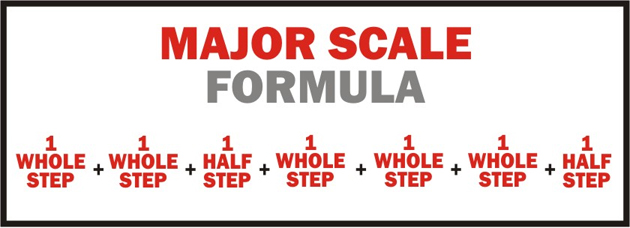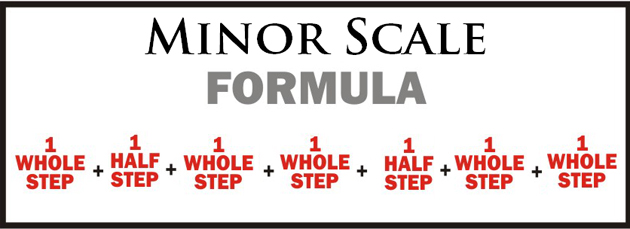A Crash Course in Electronic Music Theory + Maintaining Melodic Cohesion in “Noisy” EDM Genres
As a producer of electronic dance music, especially some of the “harsher” genres, I am known for my ability to deliver some of the most noisy, and downright ungodly computer noises, often evoking a sarcastic “careful bud, you might have a melody in there” from some of my musician friends who play and write “conventional” music . However, I must reveal a damning confession: I was trained in music theory and technique on guitar. I know how to read music. I took formal music lessons and was forced to study rhythms, key signatures, the circle of fifths, pentatonic scales and other areas of musical jargon that I was pretty sure would never benefit me in my life.
Needless to say, I deviated a little bit from my traditional musical upbringing, and defected into the world many claim is the “end of music as we know it.” The horrifying thing is that I’m not alone in my debauchery. A lot of electronic music artists known for their “talentless noise” are, surprisingly, adroit musicians. Avicii, Rob Swire (of the Pendulum fame) Joel Zimmerman (Deadmau5), Sonny Moore and countless others play conventional instruments outside of the realm of turntables and MPC controllers. It’s sad that I have to even mention to many who claim that “people like Skrillex have never played an instrument in their life,” that Sonny Moore gained fame as a lead vocalist and rhythm guitarist for the band “From First to Last” well before his establishment as an electronic musician came to be.
What does this have to do with making tracks in EDM that sound good? Surprisingly, a lot. Knowledge of the basics of music undoubtedly helped these electronic artists gain success in their artistic endeavors. Little did I know that a basic, traditional understanding of music theory would give me a huge head start later in life when I decided to start producing my own tracks. I have come across many aspiring producers who have run into a roadblock because their lack of understanding of music theory led to them having trouble “fitting the right notes together.” Electronic musicians often get a bad rap, being accused of “not having any talent” and “sitting there and pressing buttons, while others actually pick up an instrument,” but the principals of music theory are a universal characteristic of melodic composition, and apply whether you’re Excision or Pachelbel. If many think electronic music sounds like noise now, with artists showing obvious respect for rhythm, tempo, harmony and other features applicable to all genres of music, imagine a world in which it was true that electronic musicians had no regard for musical coherence at all. This disastrous, off-key, out-of-tempo EDM world would quickly spiral into obscurity as no one would enjoy it (well, perhaps someone would, but I doubt there would be large annual conventions dedicated to it).

(It might be, Squidward, it might just be)
So, for aspiring producers who have never taken conventional music classes, how much musical knowledge do you really need to have before you start producing electronic music?
You should at least have basic knowledge of the diatonic major and minor scales. A music production blog I recently came across, which shall remain nameless, said something along the lines of “try using the black notes of the keyboard; it can create a darker/sadder tone…” Well, that happens to be true, but having a deeper understanding of the major and minor scales is essential for any producer.
The following diagrams are simple representations of the major and minor scales: play the notes in these diagrams, and you can’t go wrong. Think of playing within these steps as “sour note insurance” that will prevent your song from sounding disharmonious. These patterns are constructed out of intervals called whole steps and half steps. The pattern for a given scale will not change depending on what note you start with. Start with the note “C”, follow this pattern and you will get a C major scale. Start with the note “B” and you will get a B major scale. Think of the scale patterns as being a “code” for finding what will sound right in a scale. Following this pattern, you can find any major scale, provided, you have the correct root (starting) note. The pattern of finding the scale will never change (see diagram for example).

At this point, if you’re wondering what the hell a half step and whole step are, don’t worry, it’s simple! A half step is just the next note from the one you are currently on. A whole step is (surprise) double a half step, meaning two notes from the one we’re on. For instance, if I start with the note C on piano, a half step would be from C to C#, and a whole step would be from C to D. The same principle applies to guitar as well, one fret down is considered a half step, while two frets is considered a whole step (refer to the diagram below if I’ve severely confused you).

All of the notes from the major scale formula will sound pleasing to the human ear when played together in a melody. You can find scales for all the keys you want to play in using the formula, search for them online or *cough* “transpose” button *cough* have your midi controller appropriate the key for you.
Songs can exist in major and minor keys, and, while I’m not going into the mathematical explanation or musical theory interpretation behind this, major keys generally have a happier, more inspirational feel, whereas minor keys tend to have a darker, sadder, and more determined flavor. The following diagram is a minor scale pattern. Note that the pattern of whole and half steps has changed, resulting in a darker sounding melodic structure. The same rule applies to this as does the major scale; start from any note, follow the pattern, and you will find the correct notes in the scale. Minor scales are especially important in producing “darker” EDM genres like dubstep or electrohouse.

Now that we have a basic understanding of music theory (let me say VERY OVERSIMPLIFIED understanding of music theory), and can create melodies that sound melodically appropriate, how can we use this to create more audio aesthetic in EDM genres that sound well…noisy? Have a listen to two of my current favorite tracks from “noisy” EDM genres, “The Reason II” by Au5 and “Next Level” by speaker of the house.
Notice how these tracks have an obvious and attractive melodic atmosphere dispute featuring diabolical electro synth noises? One technique to achieve this quality involves writing the melody of the song first, with a simple synthesizer then adding subsequent, additional synth patterns afterward.
This results in cohesive, well-written and unique melodies throughout a song.
Another good way to produce melodic cohesion in your “noisy” EDM genres is to use a technique called counterpoint. Counterpoint is simply a word to describe two melodies playing at the same time. The counterpoint may be a simple, yet powerful expression, as in the bell used in Au5’s “The Reason II,” or it could be a fast-paced, melodic progression like the one used in the second half of my glitch hop track, “Pancuronium.”
Another common, yet useful counterpoint technique is to use a short, repeating phrase of music throughout the song. Referred to as an “ostinato” this phrase can be seen in many “noisy” EDM tracks, hiding behind all the madness and serving as a cohesive melodic string throughout the production. Take for instance, the reappearing lead in the song “Complextro Evolution” by Katanaga. The use of this simple repeating pattern creates an attractive melodic atmosphere, right around 2:20. See how the addition of a short, repeating pattern can add melodic flair?
As can be seen from the previous suggestions, the principles of music apply to EDM just as much as any other medium or genre of music. In order to produce a great track, it is important to understand the basic principles of harmony, rhythm and melody and to use them to your advantage. As an electronic music producer, I would encourage studying as much theory as possible (or as much as will hold your attention). I hope these tips will introduce beginning EDM producers to music theory, and hopefully spark your interest in studying the mechanics behind music. I would encourage any beginning music producer or DJ to learn a “conventional” instrument (if only for the satisfying feeling of proving someone wrong once they blurt the dreaded, “you don’t play REAL MUSIC!” comment).
If you’re interested to learn more, I suggest these websites dedicated toward music theory and production:
http://musictheory.redzeppelin.org/learntheory0.php




